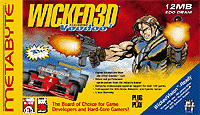
December 31: After complaining about some Wicked3D gold & silver rated titles I received this useful hint by Roland:
'to correct the non-stereo in
Kings Quest 8 you must use a stereo.cfg file for this
GLIDE-application. I used one from
another game where the ZPD parameter is high(100000) an
everything just looks great.'
If Wicked3D awards gold and silver ratings,
why don't they give us a hint how to achieve this at the same time? And
why there are no new stereo.cfg-files on their website for download?
And what about Direct3D titles, how can they be configured? Or did I miss
something? Well, anyway Wicked3D did the greatest job in stereo-game history,
we're in the holiday season and I guess they are busy with other support
related problems.

December 29: Does anybody know something about the fate of the Cyberscope 3D monitor add-on? The website is down.

December 29: Need a true hi-res HMD? Check the new Kaiser Electro Optics ProViewXL family which features real (!?!) 1024x768 full color resolution. With a price of just $15,000 it's a bargain in the hi-end market segment.

December 28: In my continued attempts to make enemies in the industry I added a 'Recommended Products' page to the Review section. Some manufacturers will miss their products in the list. There are no second places - the winner takes it all. Sorry, but this is a page for users afterall, isn't it? The list covers consumer products only and doesn't affect the professional market.
After writing down the recommendations I noticed that most of the good products were released in 1998. The stuff is just getting better.
I thought about some kind of ranking list covering all products, but it didn't work. How should I determine if some glasses should be on rank 8 or rank 9?
Anyway the new page is a 'better save than sorry' - as short and sharp as possible - guideline for beginners. Enjoy!

December 28: Renamed the 'General Info' section to 'Inside 3D'.
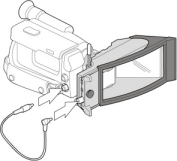
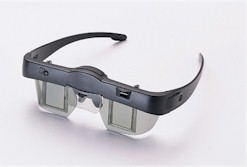
December 28: Some news from 3Dvideo Inc. the company behind the Nu-View camcorder add-on.
They now distribute the i-glasses by i-O Display Systems as well as projection systems by 3-D ImageTek, Inc.
In 1999 they will distribute a TV/Video version of the formerly-known-as-H3D-glasses under the name 'Nu-Shades Freedom WearTM'.
They also joined forces with a video production company to market feature length Stereo3D movies.
Now that H3D as a company is gone these
glasses really take off. Was there someone standing on the brake all the
time?

December 27: I finally found a Wicked3D Voodoo2 board in a german shop and bought it. The Wicked3D is the most expensive Voodoo2 board on the german market, so it appeals only to insiders who know about the enhanced driver-features. Think about this Metabyte!
The driver software really rocks, even if you don't take the stereo-features into account. The resolution override function is brilliant and it works almost all the time. Glide-games from the Voodoo1 era, which seemed to be stuck at 640x480 forever, now run in glorious 1024x672 or even more on a SLI or Banshee configuration. A line doubling feature prevents black interlace lines in stereo mode.
Some programs I tried, namely Quake 1&2, Tomb Raider 2&3, Need for Speed 2&3, F1GP-2 and Forsaken match or even surpass the stereo-quality of the best native stereo3D titles of the past. The Tomb Raider 3 demo level is gorgeous. Great stereo, no slipups, minimum eye-strain, minimum ghosting due to the lack of hard contrasts. The perfect demo to knock your friends off their feet.
In some other games, like Turok-D3D, King's Quest 8 and Gruesome Castle I couldn't achieve a noticeable stereo-effect. The picture is inside the screen and the text/menu layer sticks out from the rest, but that's about it. Nevertheless they achieved gold and silver ratings on the Wicked3D website.
Incoming, Tonic Trouble and Virtua Squad
show a stereo effect, but it's very weak in most scenes.
It seems that the people at Wicked3D who
do the ranking are looking for gfx-errors, not for the intensity of the
stereo effect.
Peter of ClassyGlasses who talked to the
them confirmed this theory.
In other words: there are GOLD-rated
titles out there which could be just PSEUDO-3D !!!
What are your experiences? What adjustments can be made? Your input is appreciated.
A dedicated Wicked3D page is in the works.
December 27: The Wicked 3D-stuff now comes in all tastes:
1) Wicked3D-board with driver-CD for users
who already have the H3D glasses.
2) Wicked3D-H3D glasses for users who
own a Wicked3D-board with drivers.
3) eyeSCREAM H3D glasses for users who
already have a 3rd party Voodoo2 board
and finally, most important and most surprising:
4) Stand-alone driver-CD for just $29 for
those who already have the H3D glasses (or some other sync-doubler glasses)
and some 3rd party Voodoo2 board.

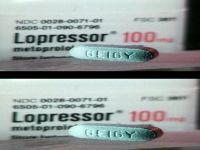
December 27: I
saw the future of 3D-Video thanks to 3DTV
Corp. and Neotek and their new TriDVD software package. It includes
software to encode 3D-video streams into MPEG-2, several plug-ins for Adobe
Premiere, a DVD-player (which requires a decoder card) and some 3D-video
samples.
The samples are MPEG-2 videos in top-bottom
3D-format for sync-doubler glasses, especially those from Neotek. I used
H3D-Activator
by Mohamad Ghazaly and a software DVD player to watch them with H3D glasses.
120 Hz or even more refresh on the PC make all the difference compared
to 50/60 Hz PAL/NTSC TV. The DVD also yields the potential for much enhanced
image quality over VHS, although the samples are not up to the higher standard
yet.
I'm currently preparing a dedicated TriDVD
page.

December 27: I asked Mohamad Ghazaly, the author of H3D-Activator a few questions. Here are the answers which may be of interest for you. I also would like to encourage all of you who are into Windows programming to help him include support for 8 and 16 bit color modes. Actually I think we need more utilities of that kind for different operating systems.
(I you don't know yet: H3D Activator is a small freeware utility which provides H3D control line code by the push of a button on the Windows desktop. This allows to watch 3D images and to use 3D applications on the desktop which are not H3D-certified.)
1) Wouldn't it be possible to support 16bit
color modes as well? I thought 3Dfx boards
use 16bit colors and H3D works
here.
Yes, it is actually possible to support
(if I programmed it) 16bit colors
and even 256 and 16 colors!! But since
I am no Master Programmer, and I
don't know the function to check for the
current color depth, I can't make
it to work in other than 24 and 32 bit
modes. Of course I will include it in
the future WHEN I find out how :-)
2) What is the difference between non-interlaced
and interlaced Top-Bottom
format?
To tell you the truth, I don't know what
is the difference between them
both. I have tried both modes (I guess
you have as well) ... but they look
exactly the same. My guess is that H3D
was going to come up with a stereo
driver (they were going to... according
to the SDK) for Glide and DX, and
these modes are just 'placeholders'.
3) Would it be possible to include a stereo-reverse switch?
No, I don't think that is possible. Since
it has been 'hardcoded' onto the
H3D controller that when doing interleaved
mode, it will alternately display
odd-even lines... so, there are two ways
(that I could think of) of
achieving stereo-reverse effect:
a) if you're watching
interleaved video/image in a window, try moving
the window one(1) line up/down
b) the stereo-reverse
have to be done on the source video (i.e. editing
the video or done during the production
of the video)
December 27: Unfortunately I missed the opportunity to wish you all a merry Christmas '98 this year.
December 20: Homebrew - Important:
The Thomas Schuhmann
Homebrew page address changed to:
http://wpfx01.physik.uni-wuerzburg.de/ZnSe/thomas-schuhmann/lcd-adapter/
Mirror available
at:
http://members.xoom.com/schuhman
December 20: JPS OpenGL Stereo Viewer - supports hardware-page-flipping, DIN-3 and WinNT
Message from Dr. Michal Husak:
'I have written a viewer for JPS images
in VisualBasic 5.
It uses the OpenGL tlb and OpenGL commands
to activate the stereo mode of
the grapics card. With Fire GL 1000
Pro , NT 4 and latest Diamond
drivers it works ( I use the NuVision
60GX glasses). If I know this
program is the only one which can show
JPS on this card (and
theoreticaly on other cards with OpenGL
stereo commands, probably some
more expensive one from 3D labs). The
first version can be downloaded for
free from the following page:'
http://staff.vscht.cz/~husakm/jpsview.html

December 13: Message taken from Classy Glasses:
>>H3D Activator With Virus?
>>Oh well, it's a 13th. Otser just mailed
me that the H3D Activator contains the CIH-virus. I have both McAfee and
Thunderybte
>>running when trying new stuff and they
didn't find anything dangerous, but better safe than sorry so I have taken
it off immediately.
>>Please anyone who already downloaded
it, don't open the zip, kill it. I'll let you know when this is sorted
out.
Peter of Classy
Glasses.

December 12: Now that H3D as a company is gone the tools and hacks are coming out. There's now a little program called H3D-Activator which.... well you guessed it. H3D fought such tools until the end, they prefered to stay proprietary. As usual the tool is available at Classy Glasses .
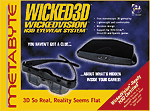
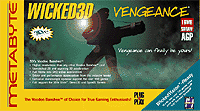
December 12: German "PC-Haus" dealer chain www.pc-haus.de catched on to metabyte/Wicked3D products. They are not that well known, but it's a start. I couldn't find anything on their webpage, but the Vengeance and the H3D-glasses are in their new flyer.
Vengeance: DM 259,-; W3D-H3D (not eyeSCREAM): DM 299,-. The add is bad, since it doesn't point out what this is all about and that you need the Wicked3D-board to get universal driver support. The metabyte Voodoo2 board isn't mentioned.
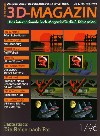
December 05: 3D-Magazin - DEAD!
3D-Magazin - The international magazine for stereoscopic 3D and nothing but stereoscopic 3D is dead! The december 98 issue was the last one, after 7 years of glossy photography, reviews and in-depth looks on the principles and technologies of the real 3D world. In his farewell letter the editor claims the poor perspective for the 3D market as a reason for the decision to stop.
I think the magazine had some other serious problems. The printing quality was extremely high and therefore the price as well. The magazine was in german language, with short synopses in english for major articles only.

December 05: H3D - DEAD - for now!
This news comes a bit late, since I was on a trip, so most of you already know. H3D went out of business, because of financial problems. This is a legal issue. I think it's the same story as with VFX-1 manufacturer FORTE. It later reemerged under a different name. The same may happen with H3D.
Metabyte will continue to sell the glasses under the Wicked3D label. They even offer the glasses seperately now with universal stereo-drivers for all brands of Voodoo2 boards. The product is called eyeSCREAM. They even think about a pure driver-CD for customers who already own a H3D and a 3rd party V2-board. That's great, but will it catch on in the mass-market?
Check the ClassyGlasses page for the full story and news updates.
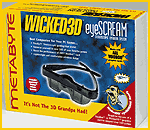
December 05: WICKED3D - DEAD AHEAD!
The Wicked3D Voodoo2 board won good reviews, even "reference" in several german magazines now. Problem is there's no way to buy the thing. The dealers are not catching on. No major dealer-chain sells the Wicked3D products. There are only a few small dealers and they are overpriced. The stocks are full with cheap Diamond and Creative Labs boards. No reason for the distributors to look for the Wicked3D. Metabyte seems to be too small to compete.
Loosing the german market is an early warning sign. It's the most important market outside the USA. If you don't make it in Germany you won't survive long elsewhere.
A good product isn't enough, large scale distribution - that is!!!
December 05: CRT-MONITORS
& SHUTTERGLASSES - DEAD SOON!?!
I just returned from a software training
and I didn't saw a standard tube monitor in the whole training center.
The railway stations are full of posters with LCD-monitor-advertising.
The magazines are full of LCD-reviews. The prices are dropping, dropping,
dropping. How long until flat-screens become the standard? Two years? Three
years? Anyway, the goode, olde CRT-monitor isn't here to stay and without
it, there's no use for shutterglasses!
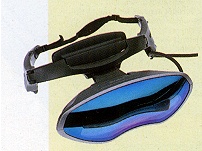

November 22: Anybody who tried the new Sony PLM-S700 Glasstron seems to drool about it. No stereo3D support and no headtracking, but maybe the best image quality in a consumer HMD yet.
Here's a quick comparison:
i-glasses, VFX-1: 0.18 million
pixels per panel
Sony S700: 1.5 million pixels per
panel
Current notebook screen: 2.4 million
pixels
We're getting closer!
All values have to be divided by 3 to
get the actual no. of colored-pixels (triads).
The stupid thing about the Sony S700 is that is has not one, but two expensive hi-res panels, but no way to feed them with 3D-information. Sony developed a $2500 device and left out the two cents worth of circuitry to support 3D. Another example of how the big names in the industry think about 3D - they give a F...!!!
Check the Mindflux http://www.mindflux.com.au/
page to learn more about the Sony products.
BTW Mindflux is also the exclusive distributor
for H3D in Australia and a co-distributor for Wicked3D.
November 22: Scitech, http://www.scitechsoft.com the company behind the well know Scitech Display Doctor teamed up with VREX to bring stereo3D support to all graphics boards and and all shutterglasses, at least under Scitech MGL (= meta graphics library?).
MGL http://www.scitechsoft.com/dp_mgl.html supports OpenGL under VGA, VESA and DirectX.
Sounds great at first, but brings about
many questions on my side:
- what about proprietary products which
require a line code, such as H3D, SimulEyes and Neotek?
- what about non-MGL stuff?
- which 3D-formats - alternate-line, page-flipping,
above-below - are supported?
- which software is available for MGL
anyway?
Full text available here.
Thanks to Owen Pearn for the
info.
November 22: Metabyte http://www.wicked3d.com/ unveiled plans to offer the H3D glasses and their famous WickedVision universal stereo3D drivers as a stand-alone product for 3rd party 3Dfx boards. The product is named "EyeScream". The driver software is copy protected.
November 12: Kasan Electronics, manufacturer of the 3D-Max and supposedly some other models of glasses sold to OEMs, finally went out of business. The Kasan hard- and software, including IR-wireless add-ons and stuff, is still available from 3DTV Corp. and some other distributors around the world. I wouldn't expect any driver-updates in the future though. What's really hot is the 3D-Max wireless controller aka 3DTV universal IR controller. It turns any wired system, such as my favorite VR-Joy, into a wireless one.
![]()


November 10: One
of the most asked questions is certainly "Which glasses to buy???"
Here's my current recommendation for consumer (!) computer shutterglasses:
Best consumer glasses for general use:
VR-Standard
VR-Joy
runner-up: Tetratel
EyeFX
Best consumer glasses for gaming: H3D, especially in conjunction with Wicked3D 3Dfx graphics boards.
Actually this is not about glasses, it's
about glasses-controllers of course.
All recommended systems are driver-less
systems.
My favorite glasses are 3D-SPEX and i-Art
VirtualEyes, but their controllers are not up-to-date.
The current consumer (!) dream-gaming-system
goes like this:
- home-made sync-doubler controller
- 3DTV universal IR transmitter
- i-Art wireless glasses ( I think they
are available seperately, w/o controller)
- Wicked3D 3Dfx board with driver level
stereo-support
If you're ready to spend $800 to $1500
you could combine the Wicked3D board with a professional, wireless sync-doubler
system, like StereroGraphics CrystalEyes or NuVision GX60 (ask for the
sync-doubler versions!).
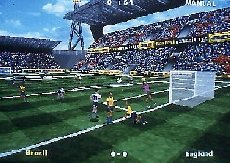
November 10: I received confirmation that the Actua Soccer stereo3D replacement exe-file from the Italian Hardware Research http://www.ihr.it/ page really works.
There are several command line options:
-sgsim SimulEyes
???
-sglcd LCD-BIOS
-sgtdb ?
-sgvrs VRex
VRSurfer ???
-sgext1 Cyberboy
Com1 ???
-sgext2
Cyberboy Com2 ???
-sgext3
Cyberboy Com3 ???
-sgext4
Cyberboy Com4 ???
-tga
?
-new
?
Thanks to João
Campos.
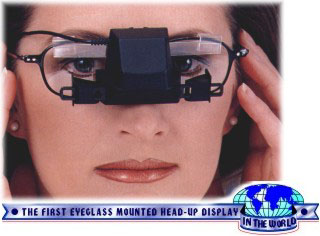
November 10: Wanna get a glimpse of the things to come in the HMD market? The "Personal Monitor" only weighs 36 grams and just clips on to your eyeglasses. The wired version is available since 12/97 already and there's a brand new wireless version too. The product is targeted on the professional market of course. It's not a VR-device yet, but I think the technology - the same as in head-up-displays - is promising. At this time the Personal Monitor offers 180.000 pixels in monoscopic vision!

November 07: Pseudo-3D alert again. There's a new product which claims to turn any (!) computer or video game into 3D. The JPi CYBERfx headset doesn't seem to have any connection to the PC or console. It consists of some "patented 3D-lenses". I guess it creates an artificial parallax so the screen image seems to come closer and out of the screen or something. Anyway, it's not real 3D, but what did you expect from a $40 headset?
I think it's about
time to start a "FIGHT FAKE 3D" campaign.


November 07: The initial versions of my new unofficial 3DTV Corp. and Neotek pages are now accessible. They contain short reviews of the tons of products I received from 3DTV recently. As usual the pages will be updated over time.

November 07: The Brightland H3D Image Viewer has finally been released. Fortunately I don't have to write a review on this one since I did this already a half year or so ago. I never imagined that this would take so long. What a pity.
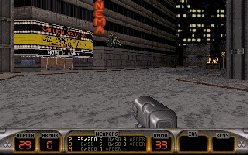
October 31: One of the most trickiest, yet some of the most desirable, pieces of Stereo3D-software is Duke Nukem 3D. There's an inofficial 320x200 stereo mode in above-below format for sync-doublers and a patch by Woobo for Cyberboy and other LCD-BIOS devices.
My friend Martin put some research into this and came up with the following command line for LCD-BIOS which may be of interest for some of you: lcdbios /Hrefresh /fastint:-4 /LockFlip /EyeDepth:0 /delayflip /lcdrun:d > r
The right version of Scitech Display Doctor to use with Duke is SDD 5.3a. An older VGA-chip like ET6000 has to be used.
The above command line is for VGA-pass-through devices and contains no trigger for serial or parallel devices.

October 29: Phony Cyberboy patch page??? Italian Hardware Research http://www.ihr.it/, distributor of Woobo products, released a Cyberboy Patch Page which raised serious doubts on my side.
They offer some patches which would be a real surprise if they were real, such as Tomb Raider, Screamer Rally (Bleifuss Rally), Archimedian Dynasty (Schleichfahrt), Grand Theft Auto and Carmageddon. I never heard of 3D support for these titles appart from the driver-level Wicked3D solution, which is not an option for old, rusty Cyberboy of course. In other words - I don't believe it - yet!
I checked most of the files from the IHR-page.
Here are the results:
Most of the so-called patches, just contain LCD-BIOS, some batch files andZAR - no patch included, ZAR is a stereo3D game, but I think it won't work with Cyberboy in most cases Quake - contains boyquake, may work Screamer Rally - no patch included in zip file Tomb Raider - link Broken Actua Soccer - patch present !?! Grand Theft Auto - no patch included in zip file Comanche 3 - just a text file Archimedian Dynasty - no patch included in zip file Madspace - no patch included, Madspace is a stereo3D game, but I think it won't work with Cyberboy in most cases Hi-Octane - no patch included in zip file, actually there exists a patch for this program, but IHR seems to believe that they can do without Carmageddon - no patch included in zip file Magic Carpet - contains the old well known patch Duke 3D share - contains the old well known tweak, but some parts seem to be missing, BTW I never heard of anyone who got the shareware version to work in stereo Duke 3D retail - I didn't download this one
the mpm3d tweak, but NO 3D-patches. In other words IHR don't seem to have understood what stereoscopic 3D is about!!! As
far as I understand it they just put a non-stereo-program into page-flipping, activate the glasses and believe this to be stereo!!! If I remember correctly I had discussions with them about this in the past already. Someone has to stop them! They don't answer my mails.
The only interesting detail on their patch-page is the Actua Soccer replacement exe-file. I know a stereo version of ActuaSoccer was in the works for some time. It may work! Someone who owns the retail version of the program should check this out and give me a feedback.
October 29: Anyone knows what happened to the HYBRIS stereo3D VRML viewer project? The link is down and the author doesn't answer mails. Does anyone have the beta-version? Please contact me.
October 28: New hi-end 3D-accelerator with stereo3d support announced. The 3DEMON twin-GMX8/80 Series features two 3Dlabs(R) Glint(TM) GMX2000 processors. Please check http://biz.yahoo.com/bw/981016/omnicomp_g_1.html
The press release isn't very precise, but I guess the card features a VESA DIN-3 stereo connector.
Thanks to Mark Bejarano for hint.
October 17: German TV-station Pro7 will air some Pulfrich-3D programs starting tomorow.
October 17: X-Ray Lab page updated!
October 09: The author of the Cyberboy Merge Win95 frontend now offers a homepage. Apart from the freeware frontend you'll find lots of other stuff there. Free Amiga VR-Games, add-ons for the 3D-Construction Kit by Incentive Software, VR-art and Heckel 1, the first voice-controlled paint program for W95. The address: http://members.aol.com/jhunke/Page1.html
October 09: A month ago I told you that issue 18 of german computer magazine c't contains an article about how to do stereoscopic scans on a standard flatbed scanner. The author has a webpage at http://www.snafu.de/~richbln/ .
October 09: Riding the Wicked3D wave the H3D glasses are now officially introduced to the german/european market. I saw several reviews in german magazines. What the authors seem to miss is the fact that Metabyte/Wicked3D and H3D Entertainment are two different independent companies. c't proposed that Metabyte should port the 3D-drivers to other Voodoo2 boards to enhance sales of the glasses. Problem is Metabyte makes money with boards, not by selling glasses. BTW the 3D-drivers won't have to be ported, just the protection would have to be removed.
A logical step would be for Metabyte to buy H3D if they can afford it. I think H3D can't survive alone anyway!? The Electronic Arts distribution deal doesn't seem to catch on. I think the best candidate for taking H3D would be Microsoft, the glasses and transmitter already have this MS Sidewinder design, don't they? <grin>
October 09: The latest issue of german computer magazine c't features a review on VR-Joy and another shutterglasses-product I wasn't aware of before: the Ideatech Visio IT-338. The wired, VGA-pass-through Ideatech glasses introduce pseudo-3D to the PC by inserting an artificial parallax between two frames/fields. c't specifies them as what they really are: useless placebo 3D stuff - well done!
Apart from that it's my guess that the IT-338 can be used as a standard VGA-pass-through autosync controller comparable to i-Art, VR97 and the like. It's also quite cheap, so it may be a recommendable product afterall.
What bugs me is the product marketing. They claim it turns any program into 3D. They don't explain the difference between real-3D and this pseudo-3D stuff. They claim that a Voodoo 2 isn't neccessary - this statement is obviously targeted at Wicked3D/H3D. They claim that no 3D-drivers or 3D-patches are necessary. This claims are all bogus!
BTW I already flamed Ideatech for the TV/Video version IT-328 long ago. Will they ever learn? Real stereo3D on PC and TV has enough problems already, we don't need this nonsense. It hurts the 3D-market!
October 09: 3DTV Corp. now offers a polarizer plate plus the neccessary electronics to allow stereoscopic viewing using micro-mirror-device DLP digital light processing - projectors.
October 09: I received a giant package of evaluation systems from 3DTV Corp., including 5 shutterglasses controllers (including Neotek), 2 universal IR transmitters, 3 shutterglasses, 3 CD-ROM's (including MPEG2 stereo3D video demos), 4 stereo video tapes and Michael Starks excellent booklet "Stereoscopic Imaging Technology".
Unfortunately I'm extremely short on time at the moment and it will take a while to get the reviews done. Stand by.
October 09: A month ago I noted here on the news page that Tetratel the makers of the EyeFX work on some revolutionary new 3D-glasses with anaglyph-shutter technology, which reportedly greatly reduces flicker. I had no idea how this is supposed to work until I found the following statement in the excellent booklet "Stereoscopic Imaging Technology" by Michael Starks of 3DTV Corp. :
"It occurred to me a decade ago that one could eliminate flicker by color coding the two images in every field and viewing them with field sequential anaglyphic shutters. Field or frame 1 would contain the right image on the green phosphor and the left on the blue and red, field 2 the reverse and the viewer would wear dichroic LCD shutters which would filter out the other eyes image. Each eye would get 60 images a second. The coding could also be done with 3 color dichroic shutters and 3 field or frame encoding. A color flicker would then replace the brightness flicker but since the visual sysem is less sensitive to color flicker this should not be bothersome. British inventor Graham Street patented this approach and actually tested it with rotating color wheels. He maintains that the resulting image was entirely satisfactory and flickerless. The Liquid Crystal Color Shutter invented by Tektronix and now marketed by several copanies would probably be suitable for this use."
Sounds great, doesn't
it? This would solve the flicker problem on standard TV/Video equipment
and the flicker and monitor compatibility problems on the PC! As stated
by Michael later in the text this would also work for 3-tube video projectors!
The upcoming Tetratel glasses also support TV/Video. I guess this will
be be an incredible boost for the Nu-View camcorder add-on. BTW
Nu-View is distributed by 3DTV Corp. as "Space Lens".
What fascinates
me the most of this anaglyph-shutter technology is the fact that shutterglasses
users are no longer forced to see time-sequential 3D only. Refresh rate
isn't divided by 2 anymore. Both eyes see simultaneously, which is much
more natural. I think the stereo perception should be better in this scenario
compared to classic shutter-glasses.
Tetratel already promised me an evaluation system! As far as I know the glasses will be wireless and contain at least a line-blanker device. I urged them to include a sync-doubler as well!
October 09: Peter's H3D/Wicked3D fan page Classy Glasses moved to it's own domain: http://www.classyglasses.com/ - Congratulations!
Peter invited me to write an article for Classy Glasses, so keep watching both sites to get all the stories!
October 09: News from famous stereographer Ray Hannisian!
Forwarded message:
For your information, I am no longer connected with VRex.
"Ray3D" announces the release of his latest stereoscopic 3D video title,
"A
Virtual Visit to New York City", (59 minutes in length).
"See
such famous landmarks as: the Empire State Building, the Chrysler
Building,
the World Trade Center, the Statue of Liberty, the Brooklyn
Bridge,
the South Street Seaport, Wall Street, China Town, Greenwich
Village,
Central Park, St. Patrick's Cathedral, Rockafeller Center, the
"Easter
Parade" on Fifth Avenue, and Times Square, as our 3D video cameras
travel
the streets and subways, boat around and take a helicopter flight
over
'the one and only' Manhattan!"
See:
http://www.ray3d.com/nyc.html
Additional news from "Ray3D" includes:
The
42 minute stereoscopic video title, "Mountain Fair" is now
available
in PAL (VHS).
See:
http://www.ray3d.com/video.html
The
CD-ROM title, "Stereoscopic Environmental Figure Studies",
(or
'3D Nudes in the Wilderness') is now complete and undergoing the final
production
steps before release. Watch my web-site for availabilty.
See:
http://www.ray3d.com/figures.html
And,
"Ray3D" is now carrying "LCS" glasses and video "driver"
boxes,
so that you can enjoy stereoscopic "field-sequential" 3D video
titles
in your own home.
See:
http://www.ray3d.com/glasses.html
Ray
Hannisian
=
Ray 3D - Stereoscopic Imaging ======
ray@ray3d.com
http://www.ray3d.com
(970)
963-8474

September 24: Alain Hubrecht alain.hubrecht@tractebel.be already tried the hi-res version of the upcoming Sony Glasstron. He describes the image quality as "terrific". Even on a 800x600 desktop all the text is readable. According to Sony there is currently no stereo3D support, but it's not impossible to add it to the design later. Currently both panels are sourced by the same video signal.
September 24: The classic fractal exploration program FRACINT offers anaglyph-3D and autostereogram functions. I used the prog myself years ago, but forgot about the stereo-features. Thanks to Gabor Laufer for the reminder. The software is available at http://spanky.triumf.ca/www/fractint/getting.html
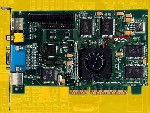
September 24: The 3Dfx reference design seems to remain the only version of a Banshee board equipped with a DIN-3 stereo connector. I checked the tech specs and board shots of 5 different brands of Banshee designs. No DIN-3 anywhere!
September 23: Version 3.0 of the anaglyph 3D shareware "3D-STEREO" is out. Check http://pro.wanadoo.fr/relief
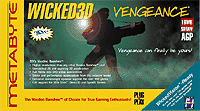
September 23: The upcoming Wicked3D Vengeance board featuring the 3Dfx Banshee chipset will support the H3D Eyewear via the above-below split-screen format just like it's predecessor. The hardware page-flipping capabilities of the Banshee might be utilized in a later driver-release. The DIN-3 stereo connector as suggested by the 3Dfx reference design will not be present on the Wicked3D version. Yeahhh - why invest in the future if you can save 50 cents instead ???
September 17: Florian Schreck's pages have moved!
Homemade Sync Doubler now at http://www.phys.ens.fr/~schreck/SyncDoubler/index.html
Colograms at http://www.phys.ens.fr/~schreck/cologram/index.html
September 17: Updated and tested circuit layouts of a VGA-pass-through and a Sync Doubler circuit are available at Thomas Schumans page at http://wpfd18.physik.uni-wuerzburg.de/mitarbeiter/thomas-schuhmann/lcd-adapter/lcd-adapter.htm
including layout in Eagle format.
September 17: Issue 18 of german computer magazine c't contains an article about how to do stereoscopic scans on a standard flatbed scanner.

September 17: In
issue 19 of c't you'll find a
short preview on Sony's Glasstron HMDs.
According to c't
the $1000 video-only PLM-A55 offers 180.000 pixels. The $2300 video&VGA
capable PLM-S700E has over 500.000 pixels and a resolution of 800x600.
Standard 640x480 applications show a black border. Actually c't says that
the "S700E" has not 500.000 pixels, but 500.000 RGB-triplets. That would
equal 1.5 million pixels and I'm quite sceptical about this. The headsets
do have 2 seperate panels, but reportedly do not offer stereo3D capabilities!
Again this is hard to believe. Of course the set has only one signal input,
but what about line- and frame-sequential 3D format?
The headsets are
extremely small and light (150g) and although there is some eyestrain it
should be much less severe than on earlier HMDs like the CyberMaxx. The
image is described as like a 17 inch monitor in 50 cm distance. That's
not what I call immersion. The Glasstron doesn't seem to be intended as
VR-device, but as a portable, battery driven monitor - headphones for the
eyes. No headtracking and likely no 3D. The cheaper model is targeted at
video and video-gaming, the top-model on portable computing. Maybe some
airlines will catch on and offer the video version to their first and business
class customers. I guess that's what Sony is after.
September 10: New reviews: Tetratel EyeFX and Firedance.
September 09: I saw some pretty bad interlace-stereo JPEGs with severe ghosting floating around the web lately . To determine how much of the ghosting is due to the JPEG format I removed half of the lines, i.e. one image from the stereo pair on several pix. The result were some monoscopic images which showed strange ghosts. Obviously the JPEG compression algorythm slightly merges the lines in an alternate-line stereo image. Well, why shouldn't it, that's the job of the compression algorythm and it wasn't designed for this interlace stereo stuff.
I tried the interlace picture from my own gallery which was done at minimum JPEG compression, i.e. 1 % - still problems!
Countermeasures:
- use a no-loss
compression format, like GIF
- distribute the
stereo pairs as seperate files or in side-by-side JPS format - this prevents
ghosts and saves space since JPEG compression can be used
September 07: Maybe it's time to define what a current shutterglasses system should look like. This is actually not a "dream-system", it's an overdue system the manufacturers should have done a year or two ago already, but they just blew it again and again.
- wireless
- large frame
- large LCD -or
whatever- panels
- big, soft nose-piece
- adjustable and/or
flexible to fit any headsize
- minimum-signal-impact
shielded VGA-pass-through cable
- line-blanker (a
must!)
- sync-doubler (a
must!)
- easy to reach,
large stereo-mode and stereo-reverse buttons
- optional (!!!)
control of stereo-mode and stereo-reverse by some code pattern
- optional DIN-3
cable
- optional TV/VCR
cable
- price: less than
$250
Professional products
like StereoGraphics CrystalEyes or NuVision GX60 are close, but the line-blanker
is missing and they are quite expensive.
September 07: I'm currently evaluating the Tetratel EyeFX shutterglasses. They are very similar to the VR-Joy, i.e. they use lin-blanking and as such they are quite interesting.
Tetratel also allowed me to talk about their next-generation glasses already. They will feature some non-liquid-crystal panels which reportedly dramatically reduce flicker. They will be wireless and have at least line-blanking capabilities, maybe even more. 3D-Video/VCR/TV will also be supported.
September 03: Video-digitizing. Some of you may wonder how to transfer frame-sequential 3D-Video, like scenes shot with the Nu-View camcorder adaptor to the computer.
First of all the
Nu-View and other standard 3D-videos use frame-sequential format.
On the computer
usually a line-sequential format will be used, which works independend
from the choosen refresh-rate. An increased refresh rate is the main purpose
of transfering the videos to the PC.
To catch the stereo-information without screwing all up the digitizer must process the whole number of lines of the respective TV-system - PAL, NTSC, etc.
APEC and other companies plan to release digitizer boards which are suitable. There are such boards already on the market.
VRex runs a stereoscopic
webcam.
On the page http://www.3dexpo.com/3d_cameras_how.htm
I found this very interesting description:
>>> "The 3Dexpo Web
Camera uses a VRex CAM-3000 stereoscopic camera to generate the 3D image.
This camera outputs "field sequential" 3D stereoscopic video in the NTSC
format. The field sequential format stores the right image
in field 1 and the left image in field 2. The output of the CAM-3000 is
piped into a Truevision TARGA+ frame buffer card on a Pentium PC. A full
frame (2 field) capture device must be used to preserve the field information.
A SNAPPY or other "interpolating" type of video grabber will not work since
both fields are mixed. The TARGA+ stores a 640x480 3D image
as a TGA file in the "line alternate" (SMI) format. This file is processed
into a JPS image which is then uploaded to the 3Dexpo web server. Equipment
courtesy of VRex. Interested in adding a 3D web camera to your site?
Give VRex a call."
<<<
September 03: Some interesting news and items from 3DTV Corp. http://www.stereospace.com/ :
- They offer universal wireless glasses which plug into almost any current "wired" controller, i.e. VR-Joy-, SPEX-, Cyberboy-, SimulEyes-, 3D-fanatix-controllers, etc. and and all the homebrew controllers making them wireless systems.
- Some good wired glasses are also available. According to 3DTV they feature: big LCD,
tough frame, bendable temples to adjust any head size, long cable, changeable filters etc.).
- With the TriDVD composer MPEG-2 3D-video files can be generated with any digitizer board from any 3D-video source, i.e. Nu-View and other systems. Actually it works with frame-sequential and R/L-seperate-sources formats.
- The Human Anatomy Lab 3D CD is out.
- Mars Pathfinder CD & Solar System in 3D due this fall.
- The NeoTek shutterglasses system uses a special anti-ghosting algorythm. It tries to prevent hard contrasts between lines which are the main cause of ghosting.
- The Space-Spex anaglyph 3D system uses yellow-blue glasses. It should be superior in terms of color reproduction and eye-strain compared to the usual red-blue or red-green methods.
- If anything goes as planned I will be able to do reviews on some of the stuff soon.
===========================
September 03: The 3D-DVD titles 3D Dinosaurs and 3D Girls Wet&Wild use the Pulfrich method - "the one-eyed sunglasses". There are more such titles, like roller-coaster-rides over at www.dvdexpress.com. Thanks to Ryko R.Prins@CRI.LeidenUniv.NL for the info.
===========================

September 03: The IISVR VFX-3D is due this christmas. No price yet. Thanks again to Marc.
===========================
September 03: There's a LINUX developer working on 3Dfx plus H3D support. H3D doesn't seem to be much interested though. Check here: http://glide.xxedgexx.com/status.html . Thanks to Marc marc@delta-global.com for this info.
===========================
August 30: Added a review of the goode ole vintage VictorMaxx CyberMaxx 2. A system discontinued long ago. I call this a "legacy product review". I needed at least one HMD review, did I? The review is a "quick shot" however. I replaced most of the usual endless commentary by a "Pro and Con" table. There's no software compatibility chart either. For information on Stereo3D titles you may consult the various software charts on this website. All CyberMaxx compatible games are marked with "CMX" in the compatibility-column. For headtracking there is the well known and terribly outdated headtracking page. Let's face it, I'm not an expert on headtracking - yet.
===========================
August 21: I just found out that Glassy Glasses got the permission from H3D to distribute the unofficial/unsupported H3D-Win-Quake beta. Get it there! I was sitting on this beta-file for month and had orders from H3D not even to talk about it - oh well. Now what is it good for? Basically it allows Quake1 to run unaccelerated in a Window on the Desktop. In other words it's pretty useless from the Q-Point-of-View.
The BIG THING is that while Q is running in a window the whole desktop is set into line-blanking mode. So if you got enough RAM, just start H3D-Win-Q and minimize the window. Now you can run your web-browser or image viewer and watch stereo images from the web. You can also use programs like the 3DEM landscape generator freeware or whatever you like. Set the right stereo orientation by software-switch or by moving the image. - Have fun. (Please note: I haven't tried the H3D-Win-Q version from Glassy Glasses yet. I just assume it's identical or at least behaves like the version I got.)
The best thing would be if H3D released an utility to control the H3D system manually under DOS and Win, but they don't want that. H3D could even handle all the professional stuff for CrystalEyes and the like. H3D has the mightiest controller in the world. It can do more than ANY other controller whether consumer or professional, but - and I can't stress this enough - they kind of maimed it! I just can't get over this. The line-code is a nice thing for comfort as long as it's there, but if it's not there the system is dead. I think the code is a very good idea, the only thing I ask for is a manual override. - Uhhh, yes and bigger panels of course.
===========================
August 18: There's a poll going on over at H3D, where you can vote for your favorite programs to become native H3D supported. Also check Peters Glassy Glasses H3D page where the whole poll-idea started.
===========================
August, 17: I asked Wicked3D about their plans for the upcoming 3Dfx Banshee chipset. They answered that they are interested in doing a Banshee board, but it may not have the H3D-driver-level support, like their current V2 board, from the start.
===========================
August, 11: Homebrew Line-Blanker! The Video-Switch IC from MAXIM (MAX 499) is capable of line blanking. It has two RGB inputs and one RGB output. The chip interlaces the two RGB inputs. By using the VGA signal as one input and a 0V "black" signal on the other Line-Blanking functionality can be achieved.
Half the H-Sync frequency is used to switch between the two inputs and half the V-Sync frequency is used to invert the switching.
The proposal came from Christian (evil.moshi@gmx.de). Thanks a lot!
The circuit wasn't
tested yet and I can't offer a full circuit layout at this point. Christian
needs some wired shutterglasses for testing. The 3D-Max replacement glasses
are sold out at Pearl!
If some reasonably
priced wired glasses should show up again on the german market please give
me a hint.
===========================
August, 11: I
was told that the VR-Joy controller uses a nasty control signal format
which might hurt some 3rd party glasses. The liquid crystals could migrate.
No danger for the Spex though. I saw no negative effects with the 3D-Max
glasses on the VR-Joy controller either, but I didn't used them that much.
(Thanks to Mike Weissman for the info.)
===========================
August, 5: I
got some reports from Wicked3D users about the quality of stereo vision.
First it's real Stereo3D! Second the quality differs from title to title
- that's what the gold-silver-bronce rating is all about. There is some
controversy about the quality of good (gold) Wicked3D stuff vs. application-level
support, like in Q 1&2. I hope the software companies will continue
to work on application-level support, instead of waiting for more graphics-boards
companies to come up with this driver-level stuff.
In any case you
should read the Wicked3D-FAQ on the official H3D
website!
Thanks to Jason Pang
of Mindflux , to Mark Branner
of H3D and to Marc
Bejarano.
===========================
July, 29: Wicked3D.
This seems to be the hottest issue at the moment. There are several unanswered
questions. Will the Wicked3D drivers and tools work on other boards. The
usual answer is no, because at least the tools are protected. Now one source
reported it worked to some degree on an Orchid board.
The next question
is how good is the stereo on the Wicked3D. Is it real stereo3D or just
some -artificial parallax- pseudo-3D? My guess is that this depends on
the 3D-API and the respective title. If the whole (!) Wicked3D hype turns
out to be Pseudo-3D only I will have to flame H3D and Wicked3D like hell.
Let's hope that won't be neccessary.
===========================
July, 29: Science
Fiction turned into Science Fact! I laughed my rocks off while watching
Star Trek DS9 episode 125 - A time to stand - yesterday. Captain Sisko
broke down and required medical assistance due to severe headaches after
using a HMD.
===========================
July, 29: More
additions to my Nu-View camcorder
3D-adaptor review.
- Progressive scan
video cameras, like the Canon Optura, do work with the Nu-View, because
the progressive scan mode can be shut off. Funny how some problems just
vaporize after taking a closer look :-) .
- There are filter
thread add-ons available for some of the new "pocket" miniDV cameras, like
the ultra small JVC models.
- There are no stereo-reverse
slipups in Nu-View videos, because the Nu-Shades controller -and other
TV-controllers- can distinguish between even and odd fields. The reverse
switch is only required if some 3rd party video tapes show up which work
the other way or if 3rd party glasses with reversed wiring are used.
- The ghosting if
any is almost entirely caused by the CRTs residue. Long persistance phosphors
are used for TV-screens.
Thanks to Mike Weissman
of 3-DVideo Inc. for the infos.
===========================

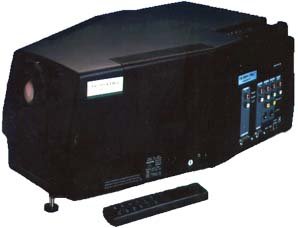
Nu-View and VRex
3D-LCD-polarizer projectors - It works!
July, 27: Correction!
In my recent review of the Nu-View
camcorder adaptor I claimed that the 3D-LCD projectors by VRex
won't work with the Nu-View format. I assumed that some additional hardware
would be required to transform the field-sequential format to line-sequential
format. Actually the VRex micro-polarizer 3D-LCD projectors already have
the required hardware to display standard 3D-video, including Nu-View-shots
and prerecorded 3D-movies on VHS.
The
left/right-fields are digitally stored and distributed to the odd/even
LCD-lines. Wearing polarizer glasses one eye only sees the odd lines and
vice versa. The big advantage of the VRex 3D-LCD projectors is the absence
of flicker!
Please excuse the
slipup.
===========================
July, 25: VRex
VRSurfer is back at the online auction.
50 classic packs to have and to hold. Bets start at $20. At a price this
low you can't go wrong. And hey, all you VGA-pass-through owners, the VRex
drivers are the best there are. The drivers alone are worth the money.
Owning the good ole' driver-CD entitles you to download updates from the
VRex site.
The VRSurfer
is wireless and works for PC and TV/Video. An incredible bargain. End date
is July 28, there are 50 items to give away, but only 21 bids yet. What
a shame. Change that! (Thanks to Mark
Bowling for the hint.)
Just go to the auction
http://www.ebay.com/
and type in the search terms "glasses 3D". There's lots of other stuff
to be found. Sega Master System with shutterglasses and 3D-games, software
and more.
===========================
July, 25: There's
a Wicked3D - H3D giveaway at www.3dfiles.com
(former 3DfxMania). 2 H3D-sets and 2 Wicked3D boards to be won. Closing
date July 31.
===========================
July, 25: Synthonics
Technologies, Inc. issued 2 patents concerning 3D-movie and 3D-television
technology. One patent covers core technologies to turn ANY 2D-motion picture
into stereoscopic-3D for the big screen! The company is specialized in
photometry technologies and software. As far as I understand the technology
they try to replace 2D-objects with their texture mapped 3D-computer model
counterparts which allows accurate 3D depth calculations. The whole movie
is somehow recreated on a digital level. Better look for yourself on the
Synthonics website http://www.synthonics.com.
Thanks to Joseph
Riser of the The Bohle Company for the press release.
===========================



July, 24: H3D
users listen up. The release of the Brightland H3D image viewer is imminent.
The viewer supports above-below, interlaced, parallel view and anaglyph
(red/blue) stereo formats. There are load and save functions for JPS, JPG,
TGA and the new *.H3D file format. The save function conserves the full
resolution of the initial stereo pair.
The zoom-plus-filter function is really cool. It allows to use the program in hi-res mode, like 1280x1024, and still watch lo-res images in full-screen without pixelization effects. You can zoom far into stereo pix "Blade-Runner-style". When it comes to image quality this viewer is second to none. (Correct me if i'm wrong, but the other programs I saw before had no filter.)
The full resolution
of the stereo pair is used. Example: Two 640x480 images are loaded. By
viewing such a stereo pair with the Brightland viewer at 1280x1024 no lines
are lost. A standard interleaved format stereo viewer would axe half of
the resolution, since it would generate a single interleaved 640x480 image.
To be fair it should
be mentioned that programs like NuVision 3D-Pix or VRex DepthCharge achieve
this too by using full-res page-flipping.
Other features include
move, rotate, crop, parallax control, stereo reverse.
Images are best
loaded by drag and drop them into the preview window.
What I'm missing at this point are slideshow-, batch-conversion- and thumbnail- functions. This may be added later, but don't count on it yet.
The viewer is suitable for H3D, VR-Joy, 60GX (sync-doubler), CrystalEyes (sync doubler). All other windows compatible glasses, like SimulEyes/3D-fanatix (WLC is kept intact), 3D-Max, APEC-VGA, VGA-PT, i-Art, Cyberstuff and more are also supported, but require the usual interlace drivers. The H3D hardware offers the best comfort here since everything works automatically.
There is only one
version of the program, the full retail version for $20. No shareware,
no demo.
Distribution will
happen over the net, payment by credit card. Check www.brightland.com
or info@brightland.com for details.
===========================
July, 24: Instead
of being ashamed H3D celebrates the Wicked3D
issue. (I just received the press release, should be available on the web
soon.) What about the other Voodoo2, Voodoo Graphics and Rendition users?
Almost 100% of the current H3D customers don't have a Wicked3D board. What
happens to them? They'll commit suicide - that is.
I heard from the
Wicked3D/Metabyte headquarters (thanks Marc)
that they're thinking about selling their stereo3D drivers/util seperately,
but not in the forseeable future. In other words not before the H3D-addict
market is saturated with their own boards. Both H3D and Wicked3D offer
bargain bundles of their products. So throw your Monster2, Pure2,
CreativeLabs or whatever shiny new V2-boards out of the window and go for
it. - See if I care.
===========================
July, 24: I
asked 3Dfx about their new Banshee chipset and it's stereo3D capabilities,
especially the VESA DIN-3 stereo connector. Here's the answer:
"We are putting
the mini Din connector on our reference design but we will not be implememting
the drivers. We are leaving that to our AIC suppliers to add value."
Can you imagine
this? An all-in-one Voodoo2 compatible solution with no path-through cable
whatsoever. That would be the good life.
===========================
July, 24: I
got rid of the sticky navigation frame on my website. You know the frame
on the right sticked after clicking an external link. I hope you like it
to be freed of this and come always back even without this reminder.
===========================
July, 23: i-Art
offers a playback package for the Nu-View
camcorder adaptor, consisting of their own VirtualEyes wireless glasses
and a video conference/capture board which allows to watch the videos flicker
free on a PC-monitor. i-Art also
started to distribute the Nu-View adaptor itself.
===========================
July, 23: Wicked3D/Metabyte
released H3D compatible D3D, Glide and OpenGL-drivers for their Voodoo2
board and a list of games.
I counted 72 (seventy-two) mouth-watering, top notch accelerated games
which reportedly work in Stereo3D. Everything's there: Unreal, Forsaken,
Tomb Raider II, Wing Commander V, Ultimate Race, Battlezone,... whatever.
The list contains detailed information about the quality of stereo vision.
It's different on every title depending on how well the 3D math is done.
As far as I know Wicked3D prevented the use of their drivers on other Voodoo2
boards.
Let's see how H3D
will react to this.
===========================
July, 22: Wicked3D/Metabyte
announces near universial stereoscopic support for Direct3D, Glide and
miniOpenGL. Read the press
release.
===========================
July, 18: The
latest issue (15) of c't magazine (germany)
contains a quite cheesy article about a Voodoo2 board bundled with H3D.
The manufacturer/distributor
Metabyte (www.metabyte.com) claims
that:
1) the shutterglasses-driver
(i.e. H3D) works ONLY for their Wicked3D V2 board
2) that their Voodoo2
board is up to 40 (fourty) percent faster than other V2 boards due to driver
tweaking
3) that ANY DirectX
game will work for the 3D-glasses (i.e. H3D)
4) to have successfully
tested the following titles with the glasses: Incoming, QuakeII, Need for
Speed, G-Police, Turok
5) that NO PATCHES
are required whatsoever
The claims are based on their new Direct3D driver.
===========================


July, 18: The
VGA-pass-through version of the NuVision 60GX provides sync-doubling for
above-below split-screen format. It syncs to interlace and page-flipping
too of course. No line-blanker though. The split-screen format is used
in many professional 3D-software titles and in H3D titles.
===========================

July, 17: The
SPEXpire strikes back. NuVision
60GX shutterglasses shipping.
The facts:
- wireless
- large pi-cell
LCD panels
- 2 controller/IR-emitter
models available:
one comes
with connectors for VESA miniDIN-3, miniDIN-5 (Intergraph & DEC),
DB9 (SGI) and 3.5 mm stereo (Sun);
the other
model has a VGA-pass-through cable
- the controller/emitter
seems to be a passive autosync device, just like a standard VGA-pass-through
controller
- no signs for sync-doubling
or line-blanking capabilities can be found in the specs, I'll have to check
back with NuVision about that
- the glasses also
listen to the StereoGraphics CrystalEyes IR codes, i.e. a StereoGraphics
sync-doubler emitter can be used
- I'm quite certain
the DIN-3 model will work with the 3-DVideo
Inc. controller too
- 600 hours battery
life
- weight: 90 g
Conclusion: The
60GX should be a very interesting alternative for professional users and
DIN-3 fans.
===========================
July, 17: Most
serial/parallel port shutterglasses systems do not have a stereo reverse
switch. In some programs this might cause problems. Here's a way to switch
the stereo orientation by software:
Switch eyes on LCDBios
by changing the LCDCtrl:/AALLRROO command.
Just swap the LL
and RR numbers to reverse stereo.
(Thanks to Don Sawdai
and Gabor Laufer.)
===========================
July, 16: Sony enters the consumer HMD market. The "Sony Glasstron" dual 180k pixel HMD is already available from Retinal Displays/ Virtuality. It seems to accept NTSC video only. Price: $1500. Headtracking is optional.
The new, unreleased "Sony Glasstron S-VGA" is ultra-small, hi-res (550,000 pixels), looks really cool and is... nooohhh... most likely monoscopic. Headtracking is optional.
(Part of this information was retrieved from the latest issue of VR News. Check this magazine out, there are free trial subscriptions and academic rates available.)
===========================July, 16: German residents should take a look into the new SMM Software News catalogue. There are some stereo capable programs. Shattered Steel full version for DM 5, Nascar for 10, Hexagon Kartell for 20, Hexen2 for 30, Leonardo for 10, ExtremePowerpack including Magic Carpet2 for 33, there are also some Quake 1&2 add-ons. The standard version of Slipstream5000 as part of the Gamebox2 bundle is not stereo capable. The Descent-Collection is already sold out.
===========================July, 15: VR-Standard Corp. released a free beta version of the Woobo S.I.C. - Stereoscopic Image Convertor software. The idea is to manually convert 2D-bitmap images into stereo3D. One function of the program is to put an artificial parallax into a single picture. The image will go into or come out of the screen, but remains flat as a whole. The other function is to put a 3D-parallax into certain objects within the image. Using a paint-brush objects can be pushed into or out of the screen, i.e. the level of the rest of the image. The brush very much works like a smudge- or push-brush of common paint-programs. Too see how this works I recommend to use the program in parallel eye mode instead of interlaced mode. I was unable to achieve anything meaningful with S.I.C., but the software is at an early stage of development. Get it from the VR-Standard homepage and take a look.
===========================July, 13: I was wrong about the Imagek www.imagek.com digital film and the Argus/Loreo camera. The camera uses standard 35 mm format, but I forgot the film is bended in front of the lens. This would crush the $1000 Imagek . Many thanks to Jan Gjessing for the wake-up call.
The Imagek should still be cool for SLR cameras with beam-splitter.
===========================
July, 7: The VR-Joy is now available in Germany. The current address is http://www.brenner-sievritts.de/vr-joy/vr-joy.html . From the end of July on the address will be http://www.vr-joy.de .
===========================July, 6: 3D-MPEGs and AVIs on the net. On the www.vrstandard.com website (the VRJoy homesite) appeared some sample 3D-videos in interleaved format. (Video and Adult section.) They run on any standard player and look great. I'm more than surprised about this. I thought the AVI and MPEG compression algorythms were unsuitable for interleaved 3D. Maybe some expert on video compression can fill me in here. The videos can't be zoomed of course, this would require a special 3D-video player which handles the lines correctly. Let's hope there'll be one soon. Watching MPEGs at 30 fps and >120 Hz refresh in 3D is fun. The sample videos are 1 to 2 minutes long and will work on all VGA-pass-through shutterglasses, except H3D of course.
===========================
July, 5: Nu-View 3D camcorder adapter and Nu-Shades TV-shutterglasses reviewed.
===========================Earlier News:

